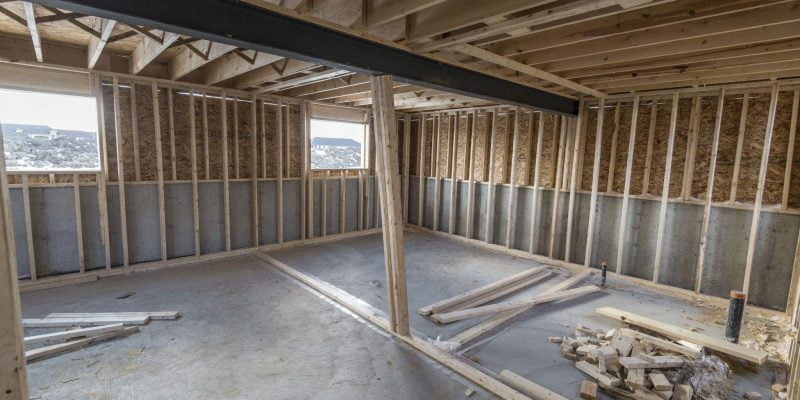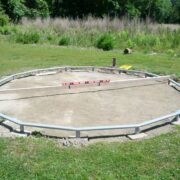Any person who has had experience working on a renovation or a construction project knows that these projects may be quite expensive. Finishing your basement is another project that may end up costing a lot of money. It is important to understand how to avoid wasting money and finish the project within the set budget. If you have experience working on these types of projects, it might be possible to do it yourself to ensure that there is no waste of materials and time. On the other hand, if you do not have any experience in construction or renovation, there are still ways that can help you finish your basement on a limited budget.
Have a Detailed Plan
The first and most useful way to finish your basement within the budget is to understand how much you realistically need to spend on the project. A clear understanding of how your finished basement will look is essential in this planning step. To estimate your expenses, you first need to estimate the amount of different materials needed to complete the project.
You can start by finding a square footage of the area that will be renovated. There are many tools that can help you to precisely calculate the square footage of your basement. When you have a clear understanding how much space you have to work on, you can start visualizing how the area will look like. If you want to add a room or divide the place into different sections, you may need to add some walls that you need to account for. Additionally, If you want to install another way up to the main floor, you need to consider the position of the stairs and how it will affect the square footage of the whole area. Different dimensions of the stairs may greatly impact the whole perception of the basement especially if it is small and tightly packed with furniture.
To help you visualize how your basement will look, you can draw up a layout on a piece of paper and indicate all items that you want to add to your current basement. This way you can track all the changes and ensure that you do not forget anything when the construction process starts. Even though it is likely that an inexperienced homeowner will not be able to draw a perfect layout, it can still be a great starting point in the planning process.
Estimate Your Expenses
When you have your plan finalized and ready, you can start estimating the cost of each job that needs to be done. One of the best ways to understand how much you will have to spend on a certain project is through working with contractors closely. You can create a list of items that need to be installed and call the contractors to learn about their prices. If you are planning to do the job yourself, then you can calculate the quantity of various materials you will need and find the prices of the materials online.
If you are planning to hire contractors, make sure to call different companies to avoid being overcharged. If you call multiple companies asking for their price estimates, you will have multiple prices to choose from. This way, you can pick the contractor you are most comfortable with. You also have to remember that different contractors will provide a different quality of the end product. This means that if the price estimate is too low, the quality of the result may also be very poor. Because of these issues, you should aim to hire a contractor that asks for a price that is similar to the median of all prices offered.
The internet is another great tool to learn about how much materials you will need for a certain project. Even if you are not a handyman, take some time to learn about how certain projects are done, how much material is needed, and how much contractors usually charge for them. There are also tools available to estimate the amount of materials needed for a certain project. For example, a stair calculator can help you understand how much material you need to buy given the dimensions of the stairs you are planning to build.
Adjust Your Plan or Finance Your Project
Suppose you have a clear plan and budget for your project, but it is still more expensive than what you had in mind. If it is possible to lower the costs by simplifying your plan or by getting cheaper materials for the hot tub, then it is something you should consider. For example, if you are planning to have hardwood floors that are out of your budget, you may consider getting engineered floors or even laminate to cut the costs of the project. This way you can still have a layout you want and have it done within your budget. On the other hand, you may also save money by simplifying your layout. If you are planning to install multiple walls for different areas in the basement, you may be able to cut some costs by removing certain walls from the layout plan. For example, if you are planning to have a kitchen separate from the dining room, you may be able to save some money by removing the wall between the two rooms. This way you can have an open-plan kitchen that is connected to the dining room. This practice can save you some money and make the whole area look bigger.
If you like your layout plan and you do not want to change anything at all, there are certain financing opportunities available for you. There are many home improvement loan programs available in the United States. You can take these loans with confidence when you know that the value of your property will increase dramatically when the project is done. In some cases, finishing your basement may increase the value of your property more than you spend on the project. If you are planning to finish your basement to increase the value of the property, but you do not have enough money to pay out of your pocket, then home improvement loans may benefit you in the long term.
Set Realistic Expectations
Setting a budget before understanding how much work and materials you need to contribute to the project will not help you to stay within the budget. Understanding what you want to do with the space, how much each job will cost, and what kind of materials you want to use before setting a budget is an essential step to complete your project successfully and within the budget. When you have the budget ready, you should decide whether you are willing to spend that amount of money on this project. If you are willing to work on the project, then you have to pick the optimal way to finance it. As soon as you figure out these details, you should be able to stay within the budget and complete your project without any adverse surprises.














[…] costs can quickly turn a renovation project into a nightmare. Clear communication about the budget, including potential contingencies, helps homeowners prepare for financial […]
[…] you have a limited budget and want to avoid such inconveniences, consider acquiring your drywall supplies out of season when […]